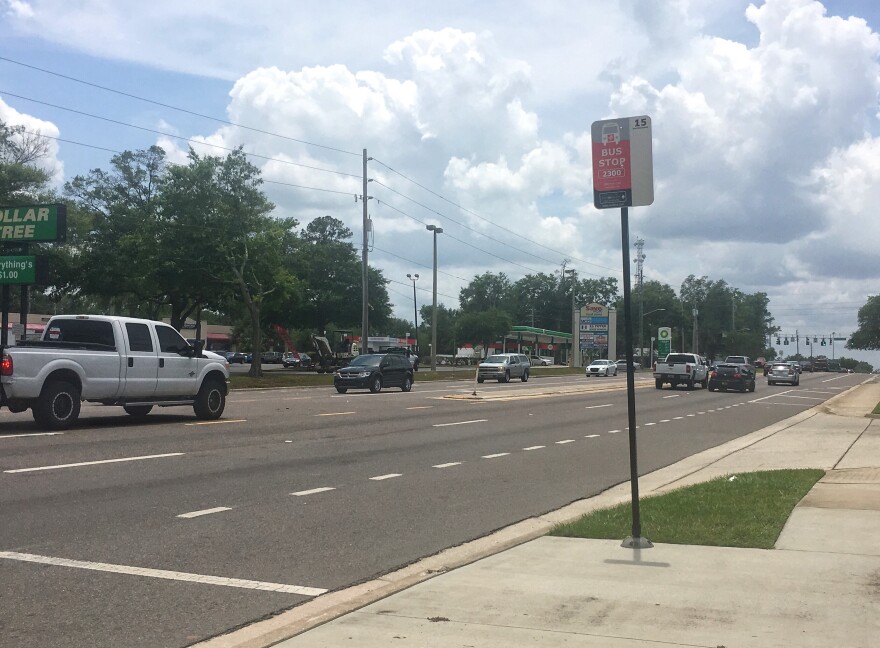Not all Jacksonville bus stops are created equal, says one Jacksonville councilman.
Some have shelters with benches to keep riders shielded from rain or sun. Others are simple signs staked into the grass. Now Westside Jacksonville City Councilman Reggie Brown is questioning how the Jacksonville Transportation Authority prioritizes which stops get shelters, as his constituents complain their neighborhoods seem to be getting left out.
It was 92 degrees Monday at a stop in Brown’s district, with the threat of a thunderstorm looming. Michael Smith had just walked off a JTA bus to start his shift at Golden Corral on Normandy Boulevard. He rides this route six days a week.
“During the day it’s brutal hot and you just sit there and you’ll get sunburnt in 10 minutes and you have to wait there sometimes for an hour, hour and a half,” Smith said. “We need to have them covered.”
The stop is marked with a sign, but has no bench or covering. It would qualify for a shelter under JTA’s standard because, on average, at least 40 riders get on the bus from this stop every day. But it’s not on JTA’s list to receive a shelter this year.
Of the city’s more than 2,600 bus stops, around 14 percent have shelters.
“It’s not adding up,” said Brown at City Hall Monday. “We just have to do better. I cannot defend this to taxpayers.”
Brown had just met with JTA officials about bus shelters. He was flipping through a packet listing all the city’s bus stops. He pointed to stops around the city with low ridership numbers that had shelters. Of the city’s 372 shelters, nearly two-thirds are at stops that don’t meet JTA’s bar of at least 40 riders a day.
“You can see in more affluent communities that the (rider) numbers are extremely low, but yet they have very nice bus shelters,” Brown said. “I like to be able to stand before the community and say, ‘No, your assumption is wrong,’ but in this case I don’t believe that they’re wrong.“
Spokeswoman Leigh Ann Rassler said JTA didn’t start prioritizing stops with high ridership until around 2015, and many shelters were installed before then. But since 2014, 88 percent of shelters installed or planned for installation are in Northwest Jacksonville and Arlington.
“The practice of using existing ridership as the primary justification for adding shelters has had the effect of concentrating new shelters in lower income areas, simply because these areas produce more bus passenger traffic,” she said in an email.
But Brown wants JTA to consider factors other than ridership, like whether stops are near schools or retirement homes. Those stops may have fewer than 40 riders now, but Brown said they would “probably have more if the conditions were better,” he said.
JTA lists 94 stops that qualify for new or replacement shelters based on ridership, 40 of them to be installed this year. But JTA said money is a big barrier. Each installation costs $20,000, and annual maintenance for all of them costs the city $724,000.
Also, JTA said some stops that need them don’t have the space, or they’d infringe on private property. Brown said he’ll continue working with the City Council to address the issues.
LISTEN | This story is featured on Redux
Reporter Lindsey Kilbride can be reached at lkilbride@wjct.org, 904-358-6359 or on Twitter at @lindskilbride.





